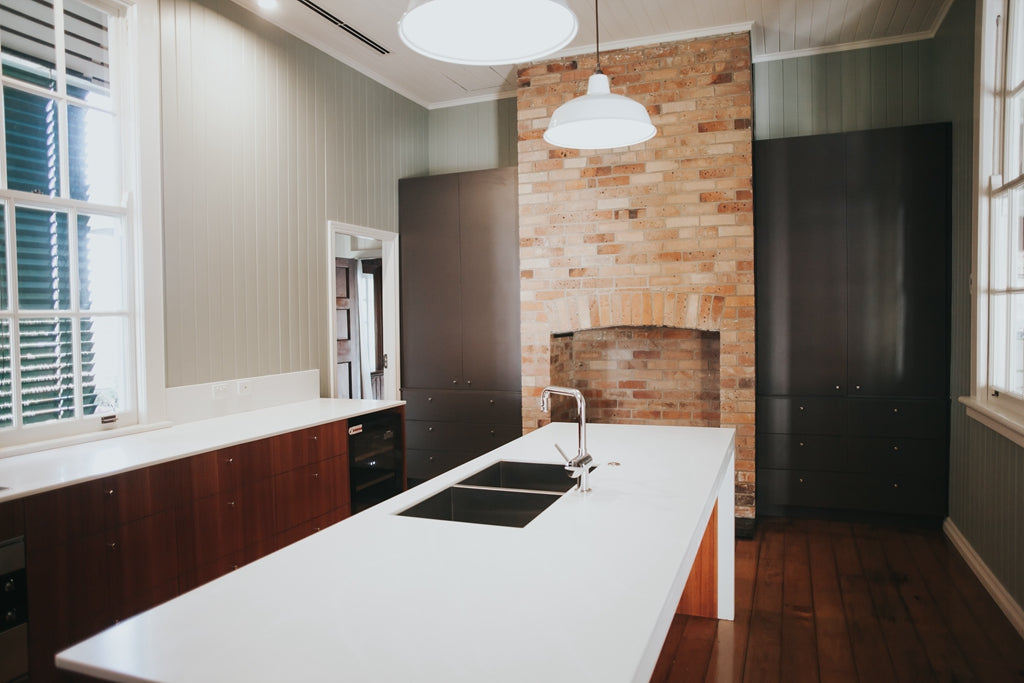
Maintaining a Kitchen Sink: An Essential Guide
Share
It is essential to maintain your kitchen sink in order to keep it in good condition and extend its life. Following is a guide on how to maintain your kitchen sink.
Daily Care
- After doing the dishes, rinse and dry the sink.
- Regularly scrape and clean the sink with warm, soapy water and a soft cloth or sponge.
- Use baking soda and vinegar to remove any stubborn stains.
- Never use abrasive cleaners and scrubbing pads, as these could scratch the surface.
- Wipe away any standing water.
Weekly Routine
- Use a soft sponge and warm, soapy water to wipe the entire sink.
- To keep the sink sparkling, glaze it with a mixture of lemon or lime and salt or vinegar and baking soda.
- Once a month, use a mild detergent for a deeper clean.
- Seal exposed calking with a calking sealer.
- Clean all waste disposal components with boiling water and baking soda.
Maintenance tips
- Avoid using pesticides, paint, adhesives, and chemicals near the kitchen sink.
- Do not use sharp or metallic objects in the sink, as this could leave scratches.
- Never dump fats, oils, and food down the drain, as these can cause clogs.
- Cover the sink if you plan to use harsh cleaners in it.
- Regularly check the plumbing connections for signs of wear or tear.
Maintaining your kitchen sink will ensure it looks great and lasts for a long time. Follow these tips to keep your kitchen sink clean and in optimal condition. Maintaining a kitchen sink is essential for ensuring a healthy and clean environment. A kitchen sink is a highly used item in most households and taking the necessary steps to properly care for it can help it last longer and provide you with a functional water source. Here is a guide to maintaining a kitchen sink effectively.
First, be sure to periodically clean the sink. Bacteria and residue can quickly build up over time, and regular cleaning will keep the sink looking good. Choose a cleanser that is specially formulated for kitchen sinks to avoid damaging the surface. Use a polish made for your sink material (stainless steel, porcelain, etc.) to help protect the finish and keep it looking good.
Second, inspect the sink for any signs of damage such as cracks, rust, or discoloration. If any are found, repair them using sealants or other appropriate methods to help ensure the water does not seep into any of the surrounding surfaces.
Third, inspect the drain for any blockages or slow drainage. Replace clogged or slow-draining pipes as necessary. Use a sink unblocker to clear any blockage in the pipes and drains. If a major clog is found, it may be best to call a professional plumber for assistance.
Fourth, regularly check the water supply underneath the sink. Make sure there are no signs of water leakage or other damage. If water is leaking, replace the broken pipes right away.
Finally, be sure to check your sink periodically for any signs of wear. Stainless steel and porcelain sinks may need to be re-polished or re-sealed to keep them looking shiny and new.
By following these simple steps and taking the necessary precautions to maintain a kitchen sink, you can help ensure it remains functional and in good condition. Remember to regular clean, check for any signs of damage, inspect the pipe and drain lines, regularly check for water leakage, and inspect for any wear and tear that may occur over time. Taking these precautionary measures can help ensure a fully functional kitchen sink.
